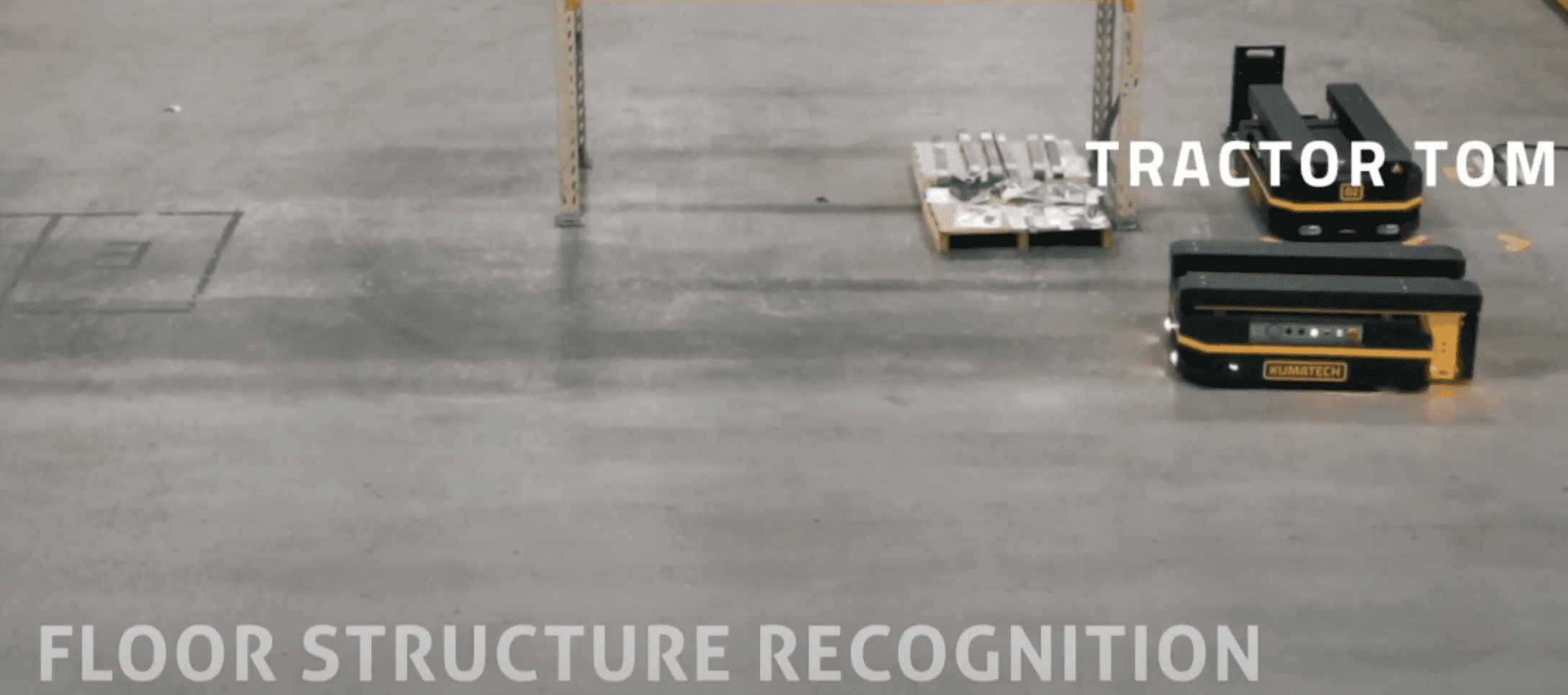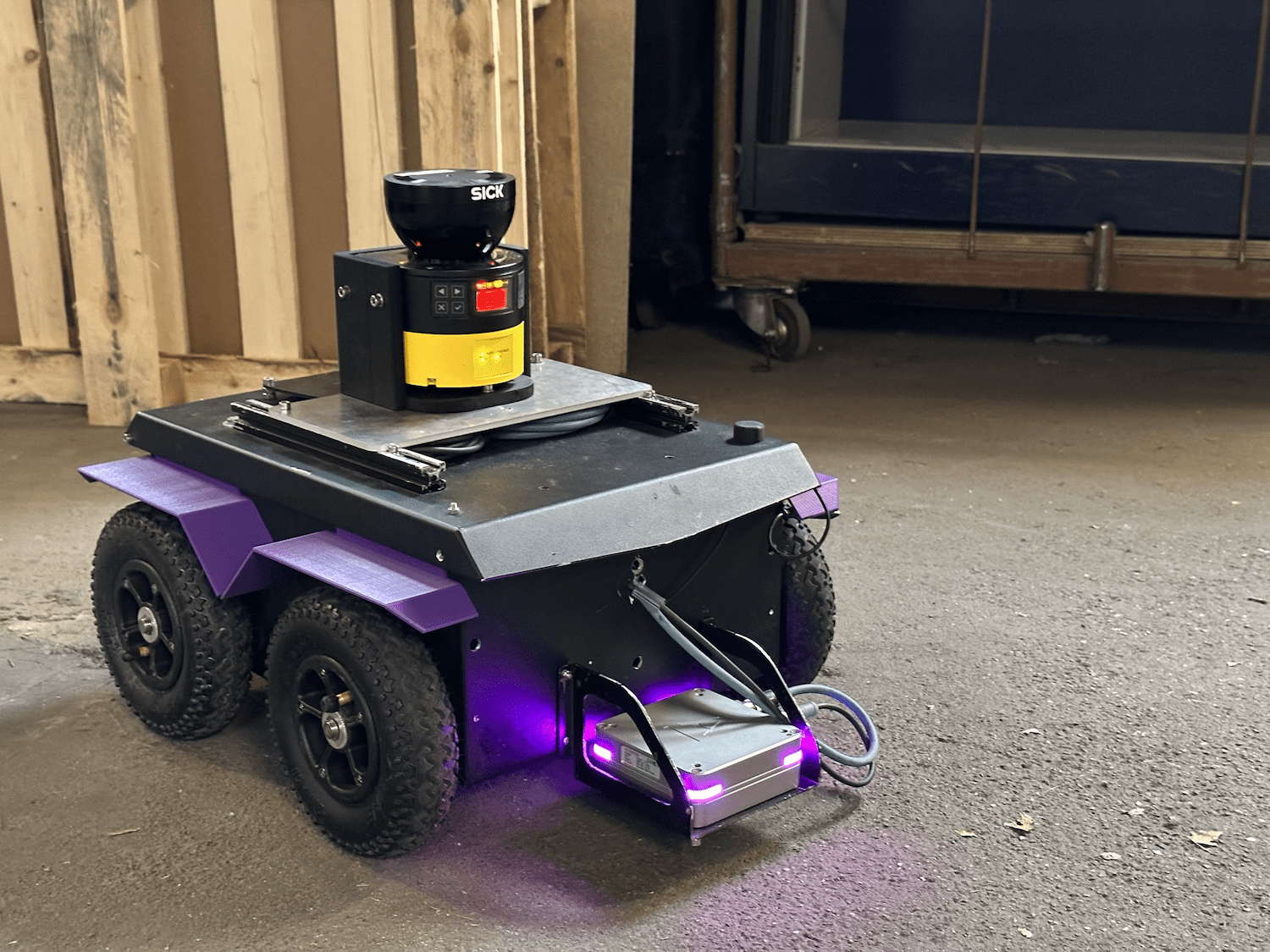A conversation with Accerion CEO Vincent Burg is a master class in business with an entrepreneur who’s taken a deep-tech startup and turned it into a global robotics player.
Not just that … in only eight years, Accerion went from a startup in HighTechXL’s accelerator program to a scale-up selling thousands of units to clients across the globe. In those eight years Vincent has gained several lifetimes’ worth of knowledge, talking with more than 1000 individual companies as he and his team built their customer base for their industrial mobile robot positioning technology.
In 2023, they’re scaling up, with technology essential to building next-generation autonomous industrial robots. So, it’s no surprise Accerion started the new year with the largest deal in its history.
Vincent, unlike a lot of startup novices, had a realistic idea of what he was getting into but had the willingness to go all the way. Looking back, it was “nowhere near clear that Accerion’s complicated software/optics package would work. That it would actually be valuable,” he says.
That technology is a blend of software and optical hardware that reads the floor of a factory or warehouse, telling the robot exactly where it is. “And that’s the solution we built,” Vincent said.
There are many other technologies, but Accerion is unique. The camera-based sensor system integrated into the navigation stack of the mobile robot reads the floor surface, recognizing the unique microstructures. After mapping a warehouse or factory floor, robots can work quickly and accurately … and autonomously.
The inventor and original founder, Willem-Jan Lamers, absolutely believed in the technology and invited Vincent to jump into the startup as they entered the HighTechXL accelerator in 2015.
“When he said, ‘You want to join me?’ I figured, what’s the worst that could happen? It sounded like a cool adventure to learn stuff. And so, I thought, why not?”
Though he couldn’t know it at the time, the “why not” side of the equation would include the founder sadly leaving the company, a global pandemic and – as they say – the best laid plans going awry.
Still, Accerion got traction early in the game, with sales to big clients and investment from LIOF and Phoenix Contact. But there were also periods of what HighTechXL founder Guus Frericks calls “eating glass.”
“I remember Guus often said running a startup is like eating glass all the time, with some slim moments of joy. So, yeah, I have to agree. I actually have many moments of joy, but I do also recognize the moments of eating glass,” said Vincent.
“I’ve had some really big ups and downs. Some real tough times. It was … it was nowhere near easy for a long time, with some key people leaving the team.”
After spending seven years in the startup grind, Vincent is known to say that he only wants to lead Accerion for two more years. But with a unique technology, a sound business plan and an expanding customer base, the future looks bright.
Building Accerion into a global robotics brand has mostly been about listening. Their breakthrough product is Triton, which strictly speaking, Vincent & Co. didn’t think of. The first navigation product was Jupiter. Designed for automated guided vehicle (AGV) and forklift navigation in high-performance logistics operations, Jupiter was physically big. Too big.
“I remember, we were sitting with one of our biggest customers … and we have the Jupiter, which was a lunch box-sized positioning system,” Vincent said.” He says, ‘Yeah, yeah, I like it, but it’s just too big. We can’t fit it.’ So, he took his coffee cup, slammed it on the table and says, ‘When it’s this big, we’re in business.’
“And we built it. That’s how Triton came to be.”
Vincent concedes there’s a fair amount of luck involved.
“Triton is actually one of our big success stories, not only in the outcome – really good, actually – but how it came about is also perfect.”
That moment of serendipity was a breakthrough. And defied all the advice he’d been given: “‘It needs to be this. It needs to be that. It needs to do all these things.’”
They had one customer with one problem and they solved it. “And that’s the start of our success. We built one thing … and it turned out to be exactly what people needed,” Vincent said.
With a team of 20 engineers, Vincent’s market strategy is focused on volume sales to the largest players in e-commerce. Accerion now has more than 2,000 Triton units in the field with customers in 15 countries, and he projects that number to double every year.
Last year, Accerion completed the biggest project in its history. Using the Triton for navigation, one of Accerion’s biggest customers rolled out a parcel sortation project in the U.S. with more than 800 robots at 40 sites in six weeks.
“And they’re running really, really well,” he said. ”That, to me, is a proof point: ‘Okay, this shows that from the technology side, we can deliver.’ There are some things we want to improve, but it shows that we’re definitely on the right track.”
So, now what? Vincent laughs when reminded he’s been saying he’ll only lead Accerion for two more years for way longer than two years.
“The thought of running a large multinational, it’s not appealing to me. What I do now is really cool, so I’m staying.”
What might the future bring? “We’ll see.”




